
When you start making kombucha at home, seeing a white, somewhat translucent layer beginning to form on the surface throws people off. This layer starts off paper thin and appears almost like a wax film. In time, it will fill in and thicken into a pancake-like disk. It might not look very appetizing, and you might wonder if something has gone wrong with your batch. Well, if it’s not fuzzy, rest assured, what you’re looking at is a completely normal part of the kombucha-making process: a new scoby, also known as a pellicle, is forming.

A pellicle refers to the membrane or skin. During kombucha fermentation, a pellicle will form on the surface or air-liquid barrier. This little (or sometimes very big if left alone) membrane has become the face of kombucha, sometimes referred to as the mother, mushroom, baby, or simply SCOBY.
SCOBY stands for Symbiotic Culture Of Bacteria and Yeast and refers to the microbes in kombucha.
Culturally, though, it has become common for “SCOBY” to refer simply to the pellicle.
The pellicle is made up of bacterial cellulose. Fun fact: cellulose, typically associated with the cell walls of plants, is also produced by bacteria! Bacteria are so cool!
The synthesis of bacterial cellulose is a side effect of the fermentation processes, not the ultimate goal of tasty kombucha.
If no cellulose is produced, aka no pellicle forms, does this mean that the bacteria are dead or not fermenting? No. It just means they aren’t producing cellulose but are doing other microbial things, which is totally okay. This is good news if you are worried that your culture is not “making a baby.”
If your kombucha isn’t reproducing a pellicle, yet all other signs are pointing to fermentation (lowered pH, lightening of color, vinegary scent, signs of bubbles, no signs of mold, and tastes good) then continue on brewing. Over consecutive brews, you will most likely get pellicle production if it’s not happening right away. Even though it’s comforting to see a pellicle growing as a sign of a healthy fermentation, it isn’t all or nothing.
If you are trying to increase the production of cellulose, try aerating your brew early on by stirring vigorously. This extra oxygen can help boost pellicle production.
What should the pellicle look like? There’s no one answer. Kombucha pellicles can grow in all sorts of weird textures, and grow to the size of the container that they’re brewed in. The structure is comprised of cellulose sheets that bond together vertically, which results in a thickening appearance over time. At the beginning of the brew, it will be just super-thin microfilm. This is when most newbies start to get concerned if they’re doing things right or not. The film is translucent at this time, showing yeast globs forming underneath–alien looking stuff to an untrained eye. Once the film begins to thicken, it looks more familiar, gains a waxy, white or tan appearance, and sighs of relief start to reassure the new brewer that all is right in their microbial world.
There’s no one perfect way for a pellicle to look, so don’t worry if yours looks off-putting. Just love it anyway and tell it that it’s special.
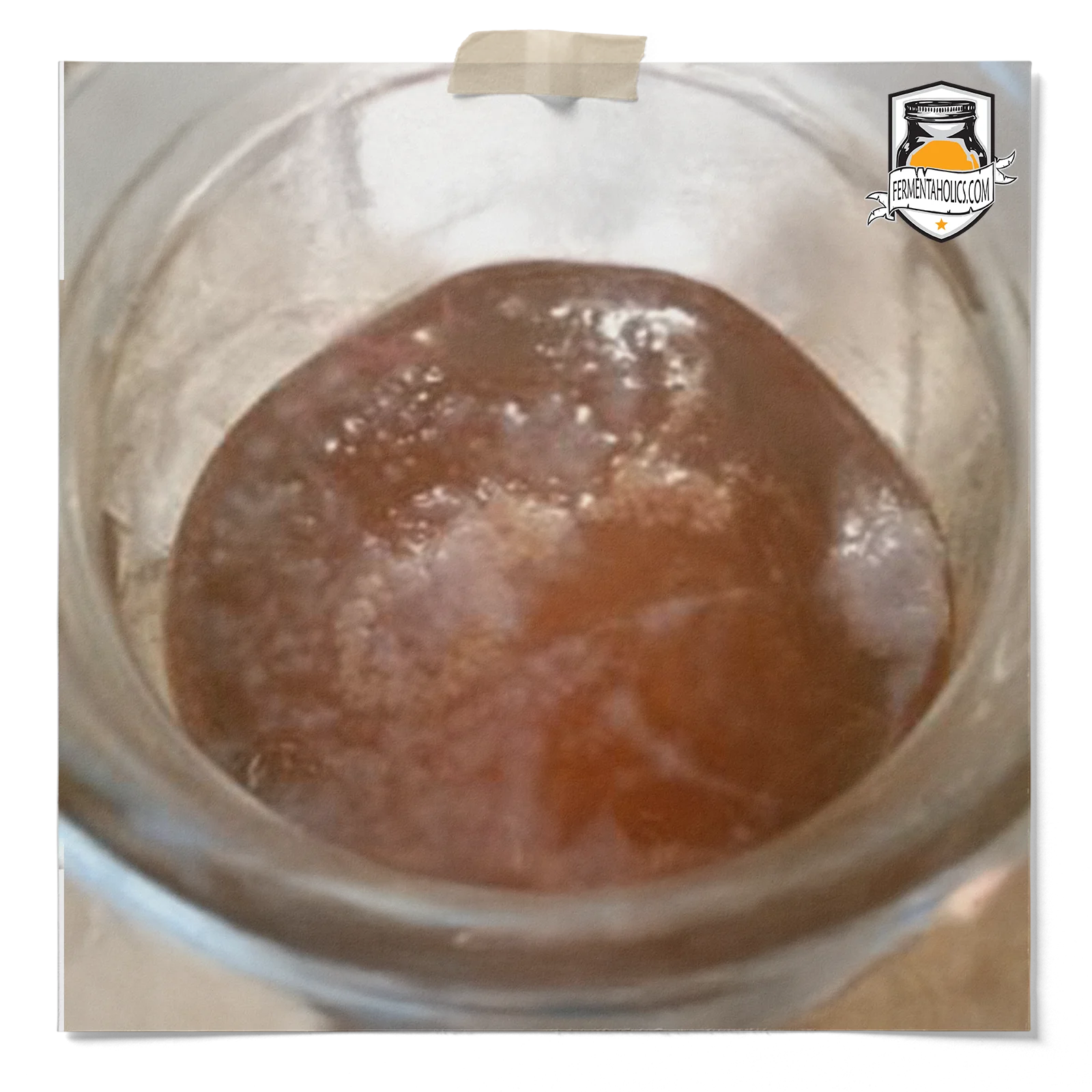
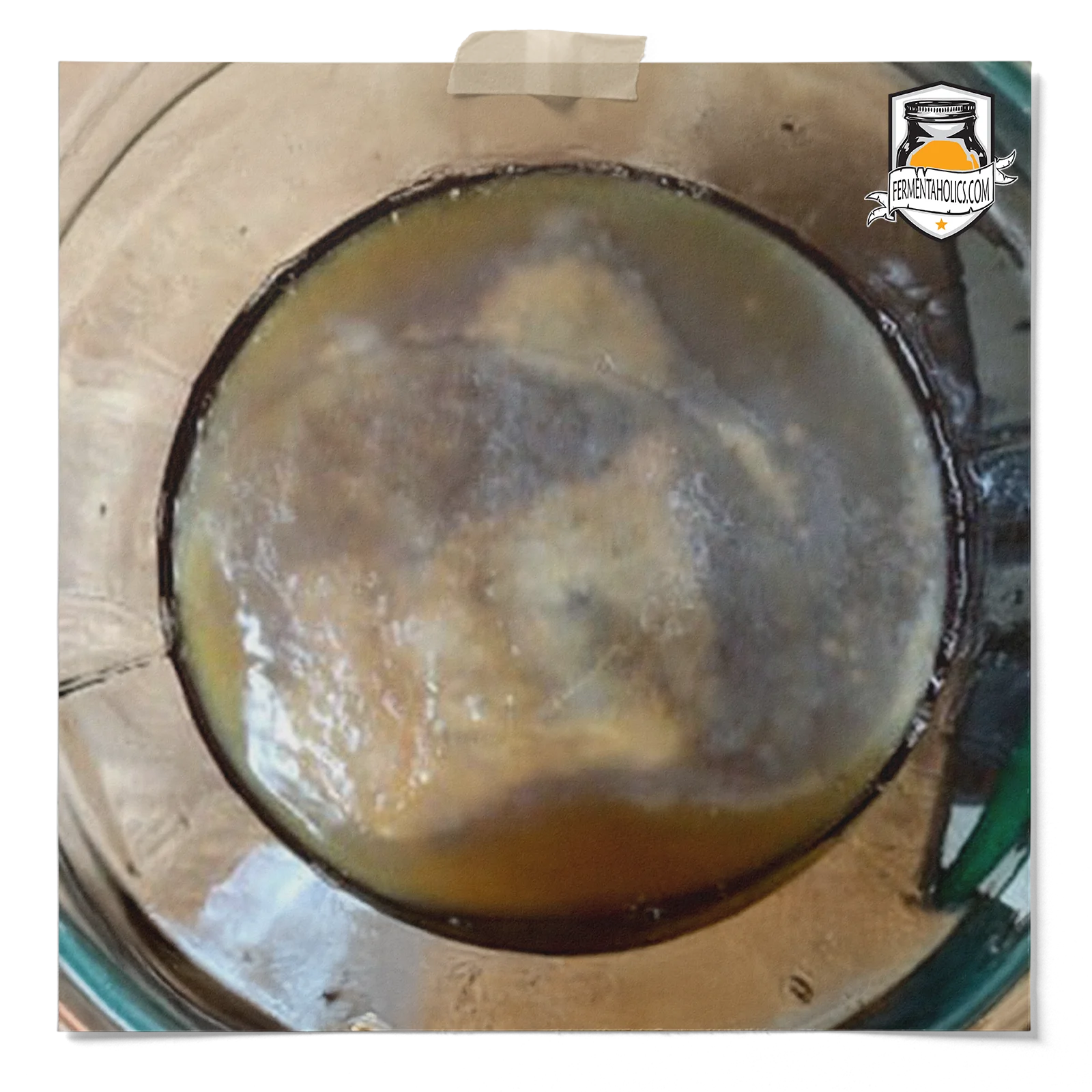

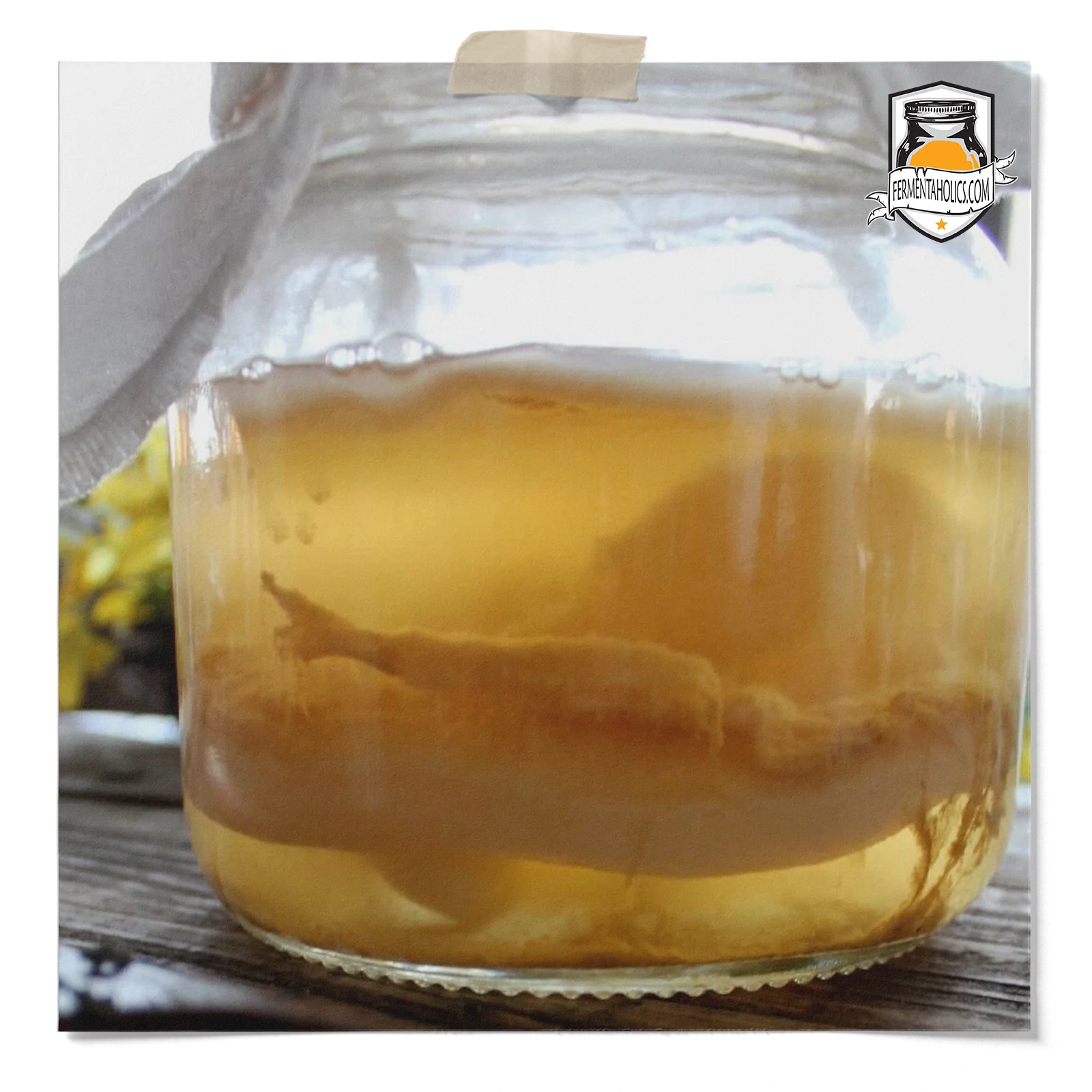
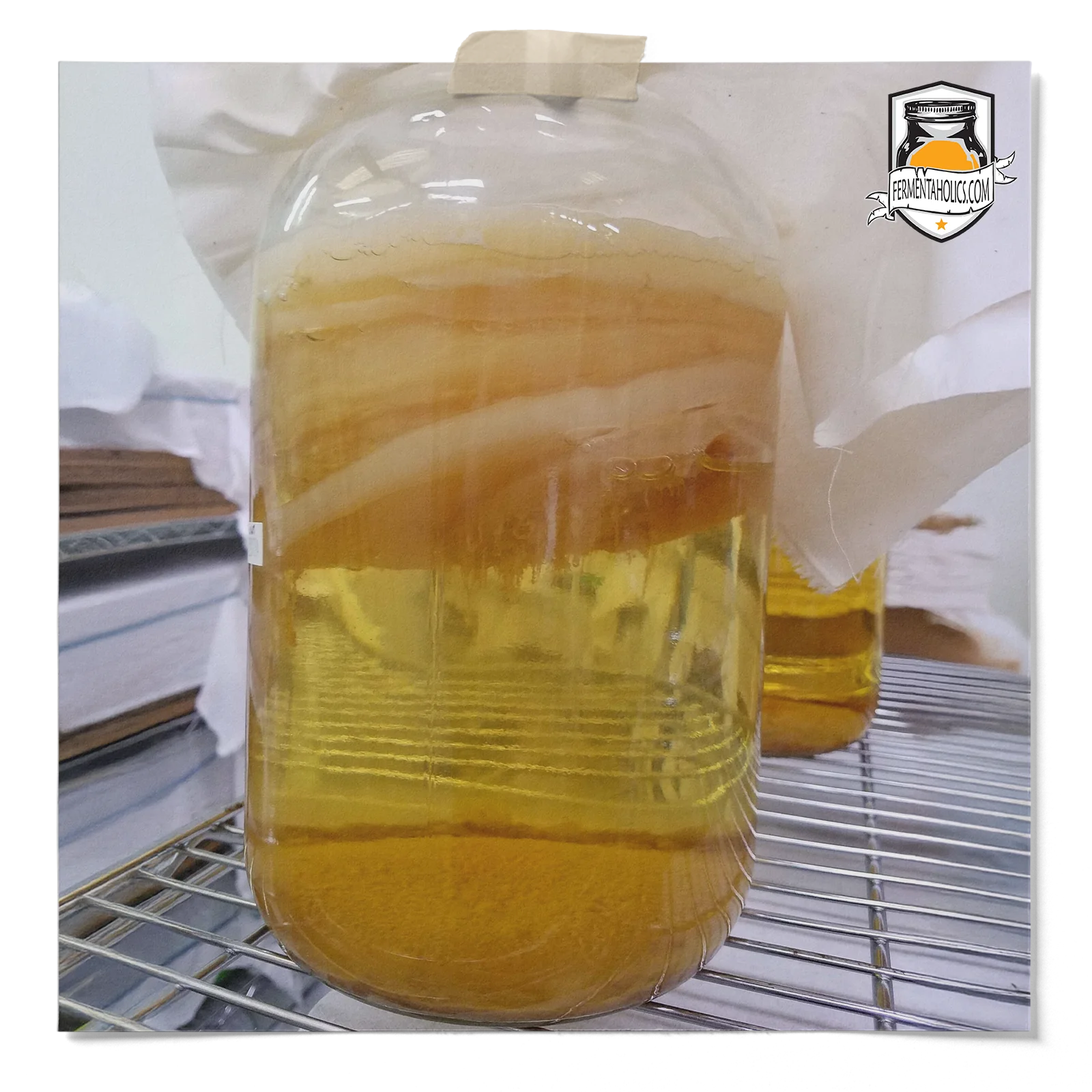
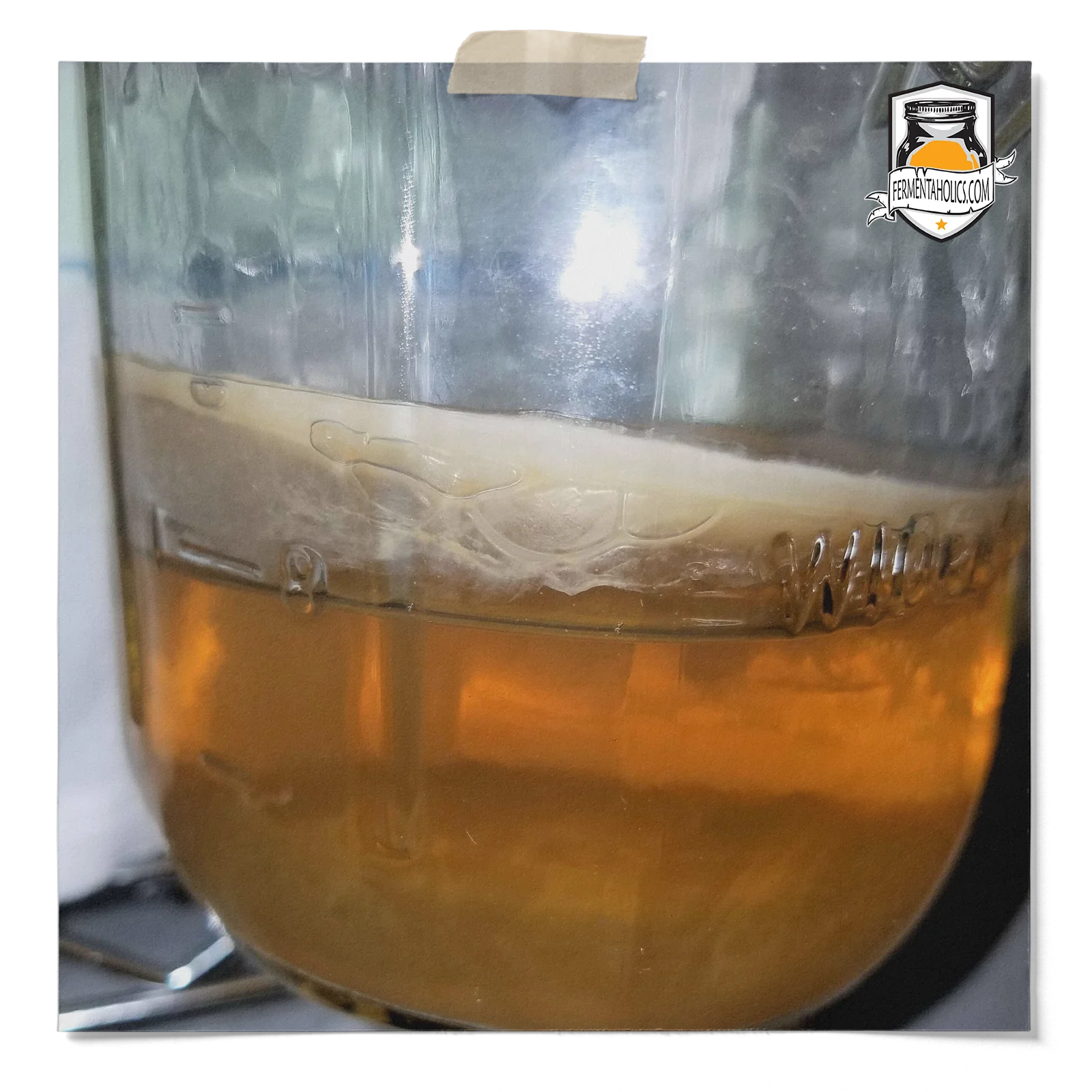
Notice that on the first photo, the pellicle has sunk to the bottom–all good because a new one will form on the top, just like in the second photo where you can see the layering. In the third photo, you can see that the pellicle is raised off of the liquid almost an inch at parts–this happens when carbonation builds up and pushes the pellicle up to escape–you can either push it down or just let it be.
If you notice a new SCOBY in your bottle, you can easily filter it out of your kombucha before drinking. When you are ready to serve, pour the kombucha into a glass through a fine mesh strainer. That’s it; your SCOBY is gone, and your kombucha is ready to drink.
The new SCOBY layer in your bottle is entirely edible and packed with beneficial microorganisms. If you don’t mind the texture, you can eat it. You’d not be alone if eating it straight up doesn’t sound appetizing. There are quite a few ways to cook with or process the SCOBY. Check out our recipe for kombucha fruit leathers; if you’re unfamiliar with fruit leathers, think Fruit Roll Ups™ made with SCOBY and fruit.
Yes, you can keep this SCOBY or add it to a SCOBY hotel, but trying to brew with it alone isn’t very practical.
First of all, the size of this SCOBY will probably be minimal. On its own, it won’t be able to provide much for starting a new batch.
Secondly, it has probably come from a flavored batch. While this is fine to use, it is against the best kombucha brewing practice to keep kombucha flavorings out of the scoby hotels and to start new batches with unflavoured ones, saving the flavor for bottling.
